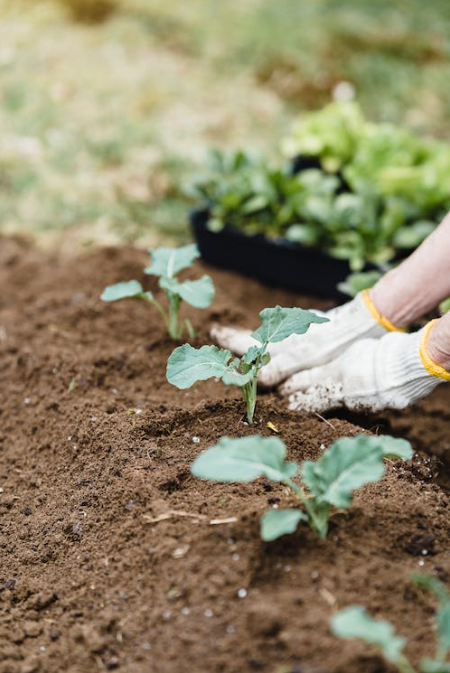Introduction
Embracing a sustainable lifestyle is not just a trend; it’s a fundamental shift towards a more mindful and responsible way of living. As the world grapples with environmental challenges, each of us has the power to make a meaningful impact through our daily choices. In this article, we will explore the concept of green living and how you can seamlessly integrate sustainability into your lifestyle.
Understanding Sustainability

2.1 Definition of Sustainability
Sustainability, at its core, means meeting our present needs without compromising the ability of future generations to meet theirs. It is a delicate balance between environmental, social, and economic considerations.
2.2 Importance of Sustainable Living
Sustainable living is crucial for safeguarding the planet’s natural resources and biodiversity. It helps reduce our carbon footprint, combat climate change, and create a more equitable and harmonious world.
The Benefits of Green Living
3.1 Environmental Impact
One of the most evident benefits of green living is its positive impact on the environment. By conserving resources, reducing pollution, and preserving ecosystems, we contribute to a healthier planet.

3.2 Health and Well-being
Living in a sustainable manner often leads to improved health and well-being. Clean air, safe drinking water, and reduced exposure to harmful chemicals all play a role in enhancing our overall quality of life.
3.3 Financial Savings
Contrary to a common misconception, sustainable living can also lead to financial savings. Energy-efficient practices, waste reduction, and mindful consumption translate into lower utility bills and a more economically stable lifestyle.
Reducing Energy Consumption
4.1 Energy-Efficient Appliances
Transitioning to energy-efficient appliances not only reduces your environmental impact but also lowers your energy bills. Look for appliances with high Energy Star ratings to make a significant difference.

4.2 Insulation and Weatherproofing
Ensuring your home is well-insulated and sealed against drafts is a key step in reducing energy consumption. Proper insulation keeps your home comfortable while minimizing the need for heating and cooling.
4.3 Renewable Energy Sources
Exploring renewable energy options, such as solar panels or wind turbines, allows you to generate clean energy and even contribute excess power back to the grid.
Conserving Water
5.1 Efficient Fixtures and Appliances
Installing low-flow faucets, showerheads, and water-efficient appliances can significantly reduce water consumption without compromising functionality.
5.2 Rainwater Harvesting
Consider implementing a rainwater harvesting system to collect and store rainwater for various non-potable uses, such as watering plants or flushing toilets.
Waste Reduction and Recycling

6.1 Proper Waste Disposal
Adopt responsible waste disposal practices, including separating recyclables, composting organic waste, and safely disposing of hazardous materials.
6.2 Recycling Practices
Prioritize recycling to divert materials from landfills. Educate yourself on what can and cannot be recycled in your area to ensure your efforts are effective.
Sustainable Transportation
7.1 Public Transit and Carpooling
Opting for public transportation, carpooling, or ridesharing helps reduce emissions and congestion on the roads.
7.2 Biking and Walking
Whenever possible, choose active transportation methods like biking or walking. Not only is this environmentally friendly, but it also promotes a healthier lifestyle.
7.3 Electric and Hybrid Vehicles
Consider transitioning to an electric or hybrid vehicle to significantly reduce your carbon footprint, especially if you rely on personal transportation.
Eco-Friendly Shopping Choices
8.1 Buying Local and Seasonal
Support local farmers and artisans by purchasing locally-produced, seasonal goods. This not only reduces transportation emissions but also fosters a sense of community.
8.2 Choosing Organic and Fair Trade Products
Opt for organic and fair trade-certified products whenever possible. These choices promote sustainable farming practices and ensure fair wages for workers.
Creating a Green Home Environment
9.1 Indoor Plants for Air Quality
Introduce indoor plants to your living spaces. They not only enhance aesthetics but also improve air quality by absorbing toxins and releasing oxygen.
9.2 Eco-Friendly Decor and Furniture
Choose sustainable materials for your home decor and furniture. Look for options made from reclaimed wood, bamboo, or recycled materials.
Supporting Sustainable Agriculture

10.1 Organic and Regenerative Farming
Support farms that practice organic and regenerative farming techniques. These methods prioritize soil health, biodiversity, and sustainability.
10.2 Community-Supported Agriculture (CSA)
Consider participating in a Community-Supported Agriculture program. By subscribing to a local farm, you directly support sustainable agriculture practices.
Promoting Green Practices in the Community
11.1 Community Gardens and Green Spaces
Get involved in community gardens or green space initiatives. These projects not only beautify the community but also provide opportunities for education and connection.
11.2 Participating in Environmental Initiatives
Join or initiate environmental projects or initiatives in your community. This could range from tree planting drives to organizing awareness campaigns.
Educating and Advocating for Sustainability
12.1 Raising Awareness in Your Community
Share your knowledge and passion for sustainability with others in your community. Organize workshops, seminars, or awareness campaigns to spread the message.
12.2 Engaging with Policy and Advocacy Groups
Get involved with organizations that advocate for environmental policies and sustainable practices. Your voice can contribute to meaningful change on a larger scale.
Overcoming Common Challenges
13.1 Balancing Convenience with Sustainability
Finding the balance between convenience and sustainability is a common challenge. Start with small, manageable changes and gradually integrate more sustainable practices into your lifestyle.
13.2 Overcoming Financial Constraints
While some sustainable options may initially seem pricier, consider them as investments in the future. Many eco-friendly choices lead to long-term savings and a healthier, more fulfilling lifestyle.
Measuring Your Impact
14.1 Tracking Energy and Water Usage
Monitor your energy and water consumption to see the tangible results of your sustainable practices. It not only helps you stay accountable but also provides a sense of accomplishment.
14.2 Assessing Waste Reduction
Keep track of your waste reduction efforts, from recycling rates to composting progress. Quantifiable data can be a powerful motivator to continue on your sustainable journey.
Conclusion
Embracing green living is not a mere lifestyle choice; it’s a commitment to a more sustainable, balanced, and harmonious way of existing on this planet. Every choice you make, no matter how small, contributes to a brighter, more sustainable future for generations to come.



